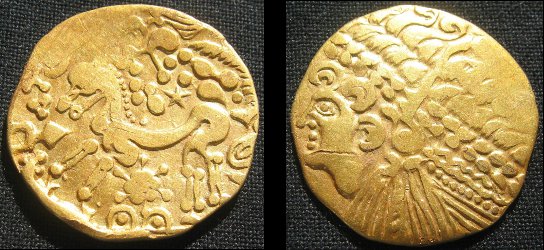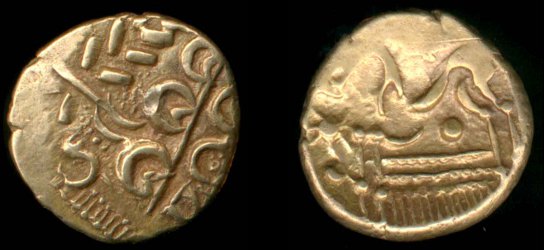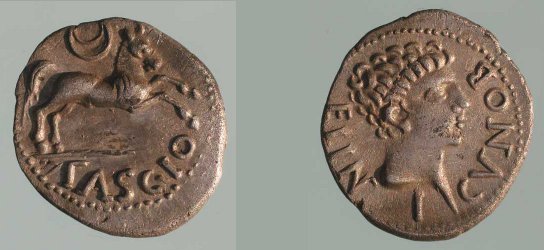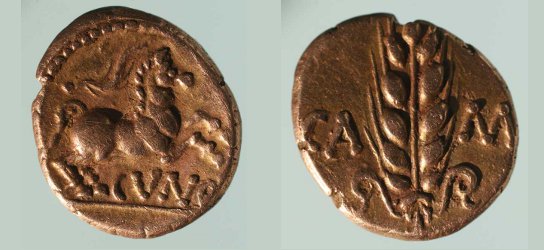In several of my blogs (and most of the interviews for MLOtv) the subject of gold Staters often arises. But what are gold staters?
Most European detectorists will know exactly what they are, but for the benefit of the rest of the world’s detecting community, this blog will cover a quick introduction to this fascinating coin group. Gold Staters are the premium coin type of the Celtic culture, and first appeared in Britain around 150 B.C. They are usually made from a mix of metals, predominantly gold (with silver and copper) and weigh on average between five to seven grams.
The first coins were imported from northern Gaul (Belgica), now known as Gallo Belgic A.

Gallo Belgic A
These coins are the Celtic copies of a Greek coin; A Macedonian gold stater of Philip II (359-336 B.C.). As you can see on the images above, the coin has a recognisable head on the obverse, although it is already started to degrade as this coins was copied from previous copy of the original coin. The hair, eye and laurel leaf headdress are already becoming stylised.
Once these coins were copied and manufactured in Britain, the stylisation of the obverse continued.

Corieltavi Stater (45 B.C.)
On the coin above the design has become so abstract, it’s hard to recognise some of the elements. The laurel leaf headdress is still prominent, but the three crescent-shaped object are in fact Philip’s eyes… although this wasn’t apparent to the die-cutter as he blindly-copied a previous coin’s design.
The next big influence to the coins design came from Roman coins that had made their way to Britain.

Cunobelin silver unit (45 A.D.)
The silver coin above is copying elements found on the silver Denarii circulating in Britain. The obverse is a direct copy of the bust and legend layout found on a Roman coin. Even the horse on the reverse has become Romanized, a more realistic version compared to the earlier stylised examples above.

Cunobelin gold Stater (43 A.D.)
The new design Romanized horse can also be seen on the gold stater above.
The horse was an important icon of the Celts, representing power and wealth. Farming in the early 1st Century was also becoming just as important, increasing tribes wealth, and this importance is highlighted by the inclusion of a Corn ear on the coin’s obverse.
After the Romans arrived in Britain, these coins seemed to continue to circulate alongside the Roman coinage. However, as soon as Queen Boadicea led the Iceni tribe to revolt against Roman rule in AD 61, all Celtic coin manufacture abruptly ended.
So to recap, Celtic gold staters are the coins of the European Celtic tribes. In Britain they date from 150 B.C. up until Boadicea’s uprising in AD 61.
They were initially copies of earlier Greek coins, and then evolved into stylised coins incorporating many elements of Celtic art. Until finally being heavily influenced by the presence of the Roman Empire.
Now get out there and find one!
Gordon Heritage




















Comments